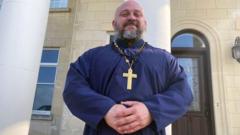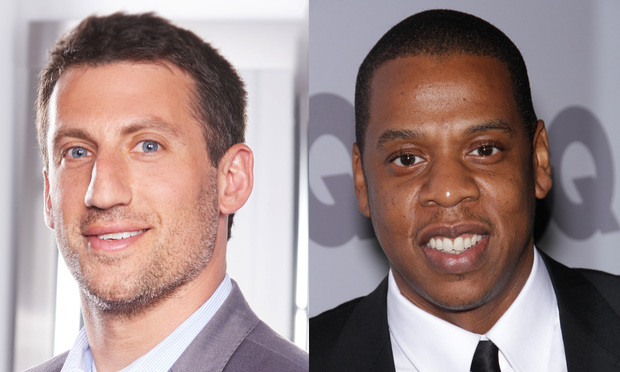In an unexpected trend, young men in the United States are flocking to Russian Orthodox churches, drawn by a form of virile masculinity espoused by clergy like Father Moses McPherson. This priest, based in Georgetown, Texas, has amassed a large online following, sharing his views on what he deems "absurd levels of manliness." With a focus on rejecting femininity in everyday expressions—like wearing skinny jeans or crossing one's legs—Father Moses promotes a robust image of manhood, symbolized through weightlifting sessions set to heavy metal music.
Since taking up the priesthood, Father Moses has overseen a remarkable growth of his congregation, tripling its size in just 18 months. His church, aligned with the Russian Orthodox Church Outside Russia (ROCOR), actively welcomes converts, with 75 individuals recently prepared for baptism. Many of these converts, including Theodore, a software engineer who previously shunned religion, cite feelings of emptiness in modern life as a catalyst for their spiritual quest.
In conversations at the church, young men express frustration with contemporary societal narratives surrounding masculinity. They feel criticized for traditional aspirations such as being the family's primary provider. Theodore highlights a longing for a return to "normal" family dynamics, contrasting sharply with current societal trends that promote liberal views on gender roles.
Moreover, many converts report choosing to home-school their children, reflecting a commitment to familial priorities over career ambitions for women. This practice, endorsed by figures like Father John Whiteford, is deemed essential for providing a religious education and shielding children from teachings they find objectionable, such as discussions on gender identities.
While the overall number of Orthodox Christians in the U.S. remains small, the demographic landscape is shifting. Pew Research indicates that the percentage of male Orthodox Christians has surged significantly since 2007. In some regions, parish numbers are increasing dramatically, attributed largely to men seeking a faith that resonates with traditional values amid societal changes.
The online presence of charismatic leaders like Father Moses plays a crucial role in attracting new members. Insights shared on various platforms resonate with disenchanted individuals seeking community and a reaffirmation of traditional beliefs. Father Moses' teachings offer a stark contrast to what he perceives as a feminized Western church landscape, criticizing services that prioritize sentimentality over traditional masculine values.
Additionally, this movement enjoys a curious overlap with a broader cultural shift, as some young men align with conservative values and views on geopolitical narratives, notably those surrounding Russia. Converts like Buck Johnson, who initially approached Orthodoxy during the pandemic, emphasize their desire to reconnect with enduring traditions, community ties, and family-centric values as a response to the fleeting nature of modern consumerism.
In conclusion, the rise of young male converts to Russian Orthodoxy reflects a growing search for identity and meaning amid rapidly changing societal norms. The church offers not only a path to spiritual fulfillment but also a rallying point for those longing to reclaim notions of masculinity entwined with traditional family values.
Since taking up the priesthood, Father Moses has overseen a remarkable growth of his congregation, tripling its size in just 18 months. His church, aligned with the Russian Orthodox Church Outside Russia (ROCOR), actively welcomes converts, with 75 individuals recently prepared for baptism. Many of these converts, including Theodore, a software engineer who previously shunned religion, cite feelings of emptiness in modern life as a catalyst for their spiritual quest.
In conversations at the church, young men express frustration with contemporary societal narratives surrounding masculinity. They feel criticized for traditional aspirations such as being the family's primary provider. Theodore highlights a longing for a return to "normal" family dynamics, contrasting sharply with current societal trends that promote liberal views on gender roles.
Moreover, many converts report choosing to home-school their children, reflecting a commitment to familial priorities over career ambitions for women. This practice, endorsed by figures like Father John Whiteford, is deemed essential for providing a religious education and shielding children from teachings they find objectionable, such as discussions on gender identities.
While the overall number of Orthodox Christians in the U.S. remains small, the demographic landscape is shifting. Pew Research indicates that the percentage of male Orthodox Christians has surged significantly since 2007. In some regions, parish numbers are increasing dramatically, attributed largely to men seeking a faith that resonates with traditional values amid societal changes.
The online presence of charismatic leaders like Father Moses plays a crucial role in attracting new members. Insights shared on various platforms resonate with disenchanted individuals seeking community and a reaffirmation of traditional beliefs. Father Moses' teachings offer a stark contrast to what he perceives as a feminized Western church landscape, criticizing services that prioritize sentimentality over traditional masculine values.
Additionally, this movement enjoys a curious overlap with a broader cultural shift, as some young men align with conservative values and views on geopolitical narratives, notably those surrounding Russia. Converts like Buck Johnson, who initially approached Orthodoxy during the pandemic, emphasize their desire to reconnect with enduring traditions, community ties, and family-centric values as a response to the fleeting nature of modern consumerism.
In conclusion, the rise of young male converts to Russian Orthodoxy reflects a growing search for identity and meaning amid rapidly changing societal norms. The church offers not only a path to spiritual fulfillment but also a rallying point for those longing to reclaim notions of masculinity entwined with traditional family values.


















